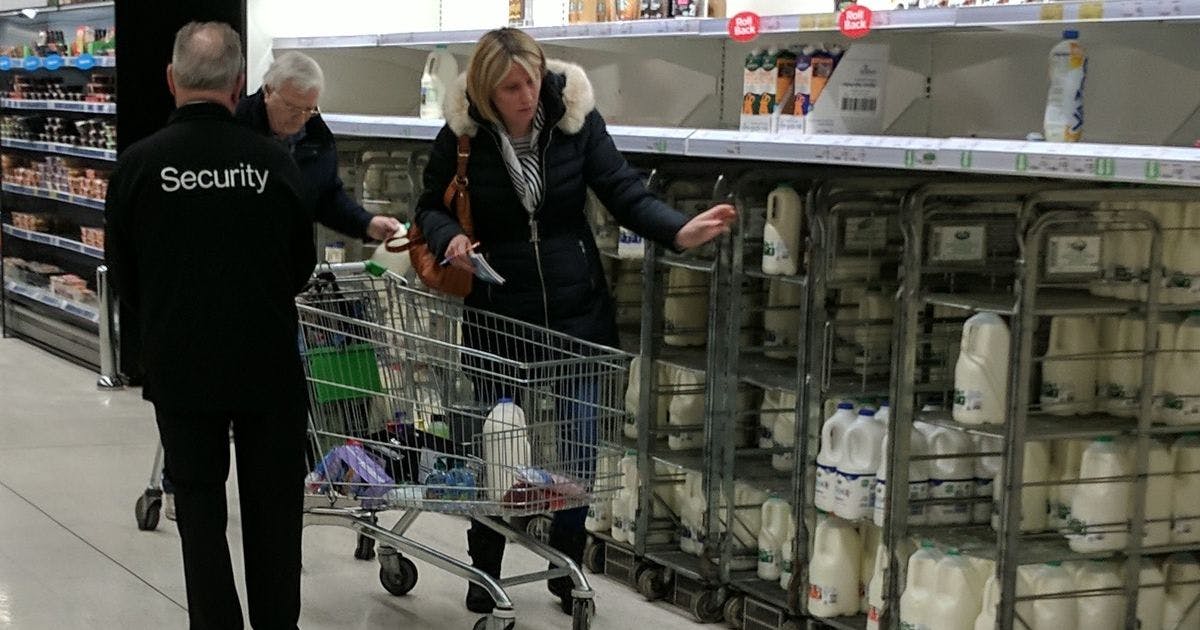
Retail Security Officers: Key Insights & Best Practices
In the context of an increasingly difficult and hostile external context to retailing, and the absence of any meaningful sanctions and / or law enforcement support, retailers have been increasing their investment in Security Officers. However, at the same time, the availability in the market of officers has reduced, with hourly wage rates growing at a rapid rate.
Consequently, many retailers are now spending more than ever on Security Officers, leading to a big, for some even a nine figure, number that inevitably attracts the attention of the CFO and questions about the return on investment, is there one or is it just a cost of doing business? And the follow on question, and how the budget owners, most retailers will use third parties, are getting the most value from this huge investment?
To discuss these trends, open questions and the latest thinking on best practices, our working group met and heard perspectives from academia and retailers.
Below are the key insights and best practices from that discussion.
Key Insights
1. Evolving Role of Security Officers
The term “security guard” is increasingly seen as outdated and pejorative. Retailers are shifting toward titles like “security officer” or “protection officer” to reflect broader responsibilities, including customer service, de-escalation, and proactive deterrence. Their role is no longer just about guarding but about being integrated, visible, and responsive members of the retail team.
2. Training Is Necessary but Not Sufficient
As Professor Martin Gill emphasized, “you can’t train your way out of a problem.” Training must be part of a broader strategy that includes clear role definitions, supportive management, and realistic expectations. Training is most effective when it is purposeful, context-specific, and aligned with the actual challenges officers face.
3. Retailer Expectations and Officer Alignment
A recurring theme was the disconnect between what retailers expect and what officers are trained or empowered to do. Misalignment can lead to preventable incidents, poor morale, and high turnover. Clear communication, consistent policies, and shared goals between retailers and security providers are essential.
4. Retailer Best Practice Model
One of the retailers in the working group presented a comprehensive overhaul of their security officer training and deployment strategy. Key elements included:
- A bespoke retailer branded training academy.
- Mandatory induction videos and e-learning modules.
- An accredited, with an established and reputable education college, training course covering conflict resolution, counter-terrorism, ED&I, and dynamic risk assessment.
- Regular feedback loops through “Officers’ Voices Matter” surveys.
- Recognition programmes like the Outstanding Security Officer initiative.
5. Return on Investment (ROI)
Their approach yielded measurable benefits:
- 34% reduction in preventable incidents.
- 20% improvement in store feedback.
- Higher officer retention and fulfilment rates.
- Fewer complaints and better alignment with store teams.
6. Support and Integration Are Critical
Officers are most effective when they feel supported by store teams and management. Integration into store culture, regular communication, and recognition contribute to morale and performance.
Training alone cannot compensate for poor working conditions or lack of support.
Best Practices for Retailers
- Use the Right Terminology: Adopt respectful, role-reflective titles like “security officer” to elevate the position and foster professionalism.
- Define Clear Roles: Ensure all stakeholders—officers, store teams, and management—understand the officer’s responsibilities and limitations.
- Invest in Tailored Training: Go beyond regulatory requirements with brand-specific, scenario-based, and ongoing training programs.
- Measure What Matters: Track KPIs such as incident preventability, customer satisfaction, and officer retention to assess training impact.
- Foster Two-Way Communication: Use surveys and regular check-ins to gather officer feedback and adjust strategies accordingly.
- Recognise and Reward: Celebrate success stories and provide career development opportunities to retain talent.
- Align with Store Culture: Ensure officers are seen as part of the team, not external enforcers, to improve collaboration and effectiveness.
Future meetings will continue to discuss and explore how the Security Officer role in the store and then remote monitoring from Security Operations Centres (SOC's) can work together to deliver a stronger capability for retailers, exploring specifically the use of body worn cameras and two way audio communications and how this all comes together to help prevent incidents and keep store staff and officers, safer.
Additionally, the group will also explore the emerging use of face matching technology and the role that the Security Officer can and will play in the successful deployment of this technology.
If you would like to join our retailer peer retail loss, safety and security working group click here to see our latest research, upcoming meetings and new initiatives.
Jun 1, 2025
Main office
ECR Community a.s.b.l
Upcoming Meetings
Join Our Mailing List
Subscribe© 2023 ECR Retails Loss. All Rights Reserved|Privacy Policy
